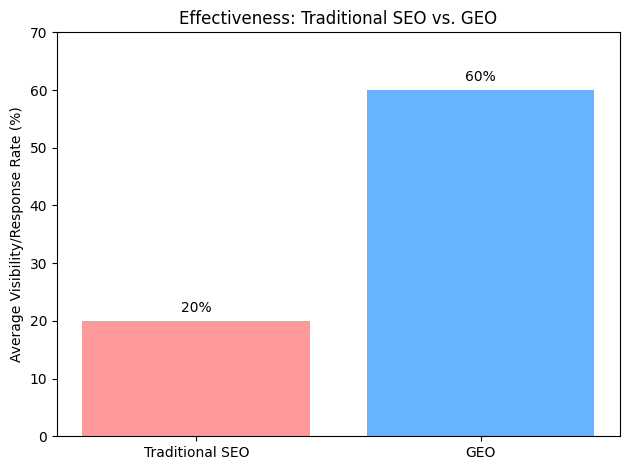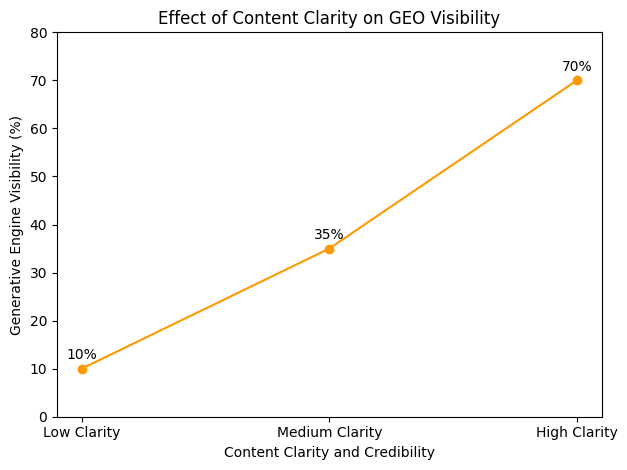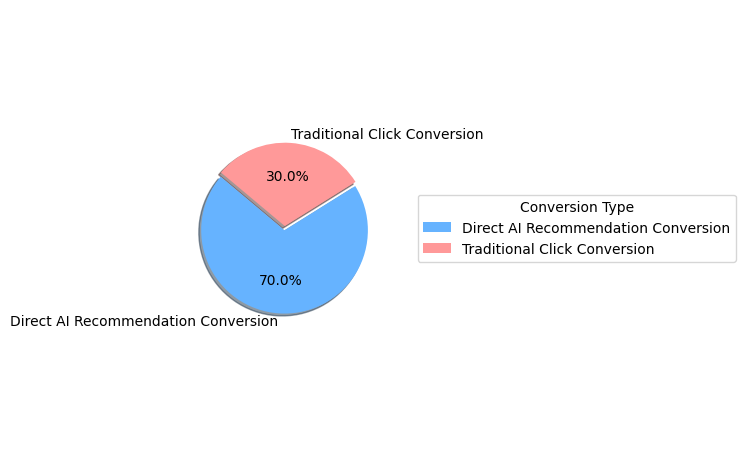SEO isn't dead. It's on steroids.
Welcome to the era of GEO (Generative Engine Optimization).
Table of Contents
List of Services
-
Reports of SEO's death have been greatly exaggerated. Write a description for this list item and include information that will interest site visitors. For example, you may want to describe a team member's experience, what makes a product special, or a unique service that you offer.List Item 1
-
SEO is a phoenix, not a zombie. Write a description for this list item and include information that will interest site visitors. For example, you may want to describe a team member's experience, what makes a product special, or a unique service that you offer.List Item 2
-
What exactly is GEO? Write a description for this list item and include information that will interest site visitors. For example, you may want to describe a team member's experience, what makes a product special, or a unique service that you offer.List Item 3
-
"But my click-throughs are down. Is GEO even worth it?" Write a description for this list item and include information that will interest site visitors. For example, you may want to describe a team member's experience, what makes a product special, or a unique service that you offer.List Item 4
-
How GEO builds brands and drives conversions. Write a description for this list item and include information that will interest site visitors. For example, you may want to describe a team member's experience, what makes a product special, or a unique service that you offer.
-
GEO Success Story: No Click Required Write a description for this list item and include information that will interest site visitors. For example, you may want to describe a team member's experience, what makes a product special, or a unique service that you offer.
-
This user didn’t follow a typical search-click-read funnel. Write a description for this list item and include information that will interest site visitors. For example, you may want to describe a team member's experience, what makes a product special, or a unique service that you offer.
-
Why this matters for your brand. Write a description for this list item and include information that will interest site visitors. For example, you may want to describe a team member's experience, what makes a product special, or a unique service that you offer.
-
Final takeaway: Your SEO best practices for a GEO era Write a description for this list item and include information that will interest site visitors. For example, you may want to describe a team member's experience, what makes a product special, or a unique service that you offer.
Reports of SEO’s death have been greatly exaggerated.
And just like Tupac's endless resurrection rumors, SEO isn’t going anywhere anytime soon. But it is evolving rapidly.
Meet GEO: Generative Engine Optimization. It’s like SEO, but on steroids and oddly, more human-centric, despite being driven by AI.
TL;DR?
- SEO isn't dying — it's evolving into GEO (Generative Engine Optimization).
- GEO content prioritizes clarity, authority, and human-centric writing — ironically essential for AI-driven search.
- Click-throughs might drop, but brand visibility, authority, and conversions can significantly increase.
- Real-world example: An AI engine directly recommended a thought leader’s eBook to a user, delivering a high-quality lead in the middle of the night without a traditional click.
Bottom line: GEO optimizes for how people actually search and buy today. For the love of Swiss cheese, don’t ignore it.
🚨 Why SEO is a phoenix, not a zombie.
Generative AI has ushered in a new era of search. According to a recent groundbreaking study, generative engines (think ChatGPT-powered search or Google’s SGE) are quickly replacing traditional keyword-matching search engines.
These new engines don’t fetch websites in the SEO business-as-usual way. They synthesize answers directly from multiple sources, radically changing how content gets visibility.
This is welcome news.
If anything should die, it’s those obnoxious recipe blogs.
And no tears will be shed.
Ya know what I mean, those ten pages worth of:
“My Hungarian Nana made these cookies from magical unicorn dust that she found after traveling to Italy in the year of our Lord 1956 and learning how to make zuppa from an old grizzled Italian guy named Gionvanni who had arms as hairy as a bear’s and smoked cigars more than a cartoon villain did and he made all the children cry on Sundays like it was his job and did I mention the unicorn was named Bob and he was clearly not Italian nor did he want to give my Nana the magical dust until she bathed in the sacred grotto just past the Via Appia and now back to the cookies but first, did I ever tell you about my cousin Steve and his encounter with a cookie-making unicorn?
Blahblahblablahblah. . .”
And you finally find the recipe after scrolling, scrolling, scrolling and turning into a skeleton.
Anyway, traditional SEO techniques like keyword stuffing and backlinks aren’t effective anymore. That doesn’t mean SEO is dead — it means we need new guidelines and best practices.
Enter
Generative Engine Optimization (GEO).

What exactly is GEO and why should I care?
In simple terms, GEO is optimizing content for generative AI-powered search engines — like ChatGPT’s browsing capabilities or Google’s SGE. But here's the twist:
- Generative engines prefer clear, authoritative, and human-centric content.
- Visibility in GEO isn’t about keyword density or backlinks. It’s about clarity, credibility, and genuine engagement.
According to the recent GEO study, optimizing content with clear language, relevant statistics, quotations from credible sources, and strong, authoritative wording significantly boosts visibility in generative search responses by up to 40%.
Ironically, AI demands more humanized content than ever.

📉 "But my click-throughs are down. Is GEO even worth it?"
Yes. Here’s why:
A lower click-through rate doesn’t necessarily mean lower effectiveness. Your brand can still build massive awareness and drive conversions, even without immediate clicks.
Why?
Generative engines often provide direct answers without requiring clicks. The click-through metric is only one part of a larger picture. Your brand is still achieving:
- Mental Availability: You’re showing up consistently, reinforcing your brand’s expertise.
- Physical Availability: You’re easily findable when users are ready to buy.
- Trust & Credibility: Users see your content directly referenced, building trust even without clicks.
In other words, clicks aren’t everything. Generative engines might reduce direct clicks, but they significantly increase your brand’s influence.
📈 How GEO builds brands and drives conversions:
- Optimizing for Human Behavior: GEO content clearly answers what users really ask—can they easily get it, justify the price, and not look foolish buying?
- Increased Trust & Authority: Generative engines reward clear, credible, well-structured content that provides real value.
Improved Conversion Rates: By clearly addressing core user questions upfront, users who do click through convert at higher rates.
This isn't just theory. Real-world case studies show that GEO methods — such as adding credible citations, relevant quotes, and clear, conversational language — dramatically increase brand visibility and ultimately conversions.

A GEO Success Story: No Click Required
Here’s how GEO is already reshaping content discovery in the real world:
Recently, a prominent LinkedIn thought leader — someone with a distinct, authoritative point of view — published a niche-focused eBook. This expert’s personal brand and clear, relevant content had strong mental availability already, thanks to consistent, credible messaging.
Here’s the kicker:
Someone reached out to her directly after discovering the eBook through an AI-generated search response. They never even clicked a traditional search link. Instead, the AI (the generative engine) directly served up a link to her eBook after receiving a highly specific, relevant query.
That’s GEO in action.
This user didn’t follow a typical search-click-read funnel.
Instead, the AI search engine identified this thought leader’s highly relevant, authoritative content — and directly placed it in front of the right person at precisely the right time.
The result?
- Brand Visibility: Her brand reached exactly the right audience instantly.
- Authority & Credibility: The AI’s recommendation added immediate credibility and trust.
- Real Conversion: Direct, qualified interest, and ultimately, a valuable new connection — came directly from AI-driven discovery, no traditional search clicks required.

🎯 Why this Matters for Your Brand:
This scenario underscores an essential GEO truth:
Direct clicks may decrease — but relevance, visibility, and conversions may actually improve.
The rules of search engagement are shifting. The brands thriving in the GEO era won’t obsess over traditional clicks alone. Instead, they’ll ensure content is:
- Clear and conversational
- Authoritative and credible
- Highly relevant to specific user questions
🚩 Final takeaway: Your SEO best practices for a GEO era
SEO isn't dead. It never will be — as long as people use search engines. But it is evolving. GEO isn't replacing SEO; it's refining it to be more human, more authoritative, and ironically, more AI-driven.
To thrive in the GEO era, focus less on keywords and backlinks, and more on clear, credible, human-first content.
Clicks are down? Who cares. Awareness and conversions? They’re still happening — probably more effectively than ever before.
Next Steps:
Ready to dive into GEO but unsure where to start? I'll help you build a content strategy that thrives in the GEO era — clear, credible, and conversion-focused.
👇 Book a quick meeting to see what GEO could mean for your brand.
